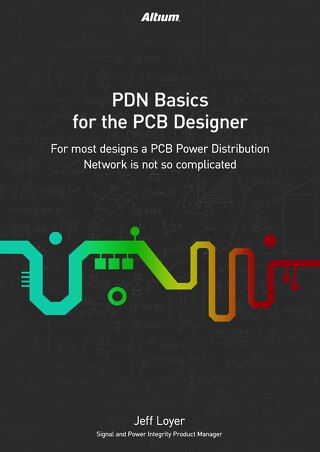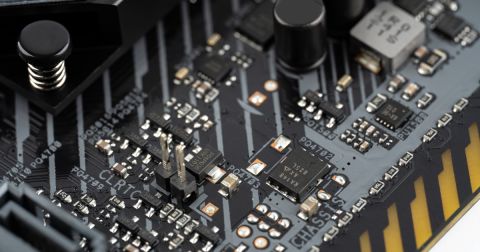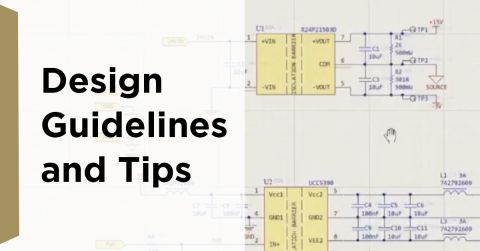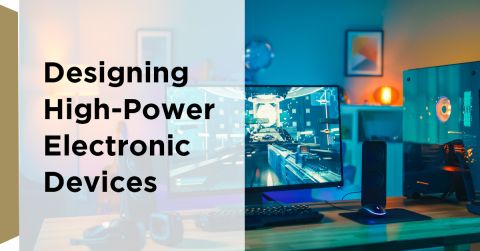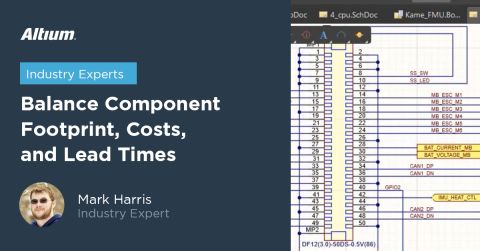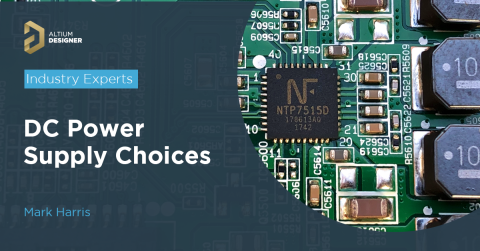Efficiency Standards and Ratings for External Power Supplies

A power supply’s efficiency is simply the ratio between the energy it consumes and the energy it supplies. No device can be perfectly efficient; there will always be losses in heat or electromagnetic fields. The leading causes come from active component losses (MOSFET and diode switching losses) and, to a lesser extent, from passive component losses (resistors, capacitors, and inductor impedance losses). It moves towards utilizing higher switching frequencies in power supplies that are driving inefficiencies in traditional power supply circuits, and so much of the effort is targeted at reducing active component losses.
The efficiency will also depend on the load. A power supply’s efficiency under no load will be different from that at the typical operating load or the maximum rated load. The change in efficiency with changes in loading will be non-linear and is typically at its highest value at or near the normal operating load.
What are the various efficiency ratings?
Mandatory regulations covering minimum efficiencies and no-load power consumption for external power supplies have only been around in the US since 2004. Before that, the Environmental Protection Agency (EPA) operated a voluntary program to promote energy efficiency that evolved into the Energy Star program. The problem came when countries worldwide adopted national standards that made life complicated when products are bought and sold in the global marketplace. Out of this situation came the International Efficiency Marking Protocol, which set out performance thresholds for no-load power requirements and average efficiency requirements.
|
Level |
No-load power requirement |
Average efficiency requirement |
|---|---|---|
|
I |
Does not meet defined criteria |
Does not meet defined criteria |
|
II |
No criteria formally established |
No criteria formally established |
|
III |
≤ 10 W: ≤ 0.5 W of No Load Power 10 to 250 W: ≤ 0.75 W No Load Power |
≤ 1 W: ≥ Power x 0.49 1 to 49 W: ≥ [0.09 x Ln(Power)] + 0.49 49 to 250 W: ≥ 84% |
|
IV |
≤ 10 W: ≤ 0.5 W of No Load Power 10 to 250 W: ≤ 0.75 W No Load Power |
≤ 1 W: ≥ Power x 0.50 1 to 51 W: ≥ [0.09 x Ln(Power)] + 0.5 51 to 250 W: ≥ 85% |
|
V |
Standard Voltage AC-DC Models (> 6V Output) |
|
|
0 to 49 W: ≤ 0.3 W No Load Power |
≤ 1 W: ≥ 0.48 x Power + 0.140 |
|
|
Low Voltage AC-DC Models (< 6V Output) |
||
|
0 to 49 W: ≤ 0.3 W No Load Power |
≤ 1 W: ≥ 0.497 x Power + 0.160 |
|
|
VI |
Standard Voltage AC-DC Models (> 6V Output) |
|
|
≤ 49 W: ≤ 0.1 W No Load Power |
≤ 1 W: ≥ 0.5 x Power + 0.160 >49 to 250 W: ≥ 88% >250 W: ≥ 87.5% |
|
|
Low Voltage AC-DC Models (< 6V Output) |
||
|
≤ 49 W: ≤ 0.1 W No Load Power |
≤ 1 W: ≥ 0.517 x Power + 0.087 >49 to 250 W: ≥ 87% >250 W: ≥ 87.5% |
|
What efficiency rating applies to me?
What level you should be looking at depends on where in the world you are. Currently, level VI applies to the US, while Canada still requires level IV. The European Union presently requires level V though new regulations are coming into force this year that need efficiencies greater than level V or level VI. Still, these are yet to be reflected in the International Efficiency Marking Protocol. The requirement for level VI in the US came into force in 2016; before that, the US required level IV. This means that all external power supply products manufactured after the beginning of 2016 in the US must comply with level VI.
Are there exceptions to the rules?
As with all things in life, every rule has an exception. Not all external power supplies are required to comply with these levels; exemptions exist in both the US and the European Union. For example, in the US, external power supplies used with medical devices come under the Federal Food and Drug Administration (FDA) rather than these EPA rules.
Another complication is that the new EPA rules only apply to direct operation external power supplies. The power supply operates the end product without the assistance of a battery, including battery chargers. Indirect operation external power supplies require the aid of a battery to operate their end product. Indirect operation external power supplies remain under the level IV rules.
What’s driving the efficiency rules?
First, the EPA initially moved to apply level IV rules to all external power supplies, followed by the recent shift from level IV to VI for some types because of the considerable energy saving it delivered. It’s estimated that the rule changes have reduced energy consumption by over 30 billion kilowatts over the past decade. That’s three, followed by nine zeroes Watts. It represents savings of around $25 billion and reduced CO2 emissions by a quarter of a billion tons. And that’s just the US.
Around the world, over a billion people use a personal computer and electronic devices to account for over 15% of household electricity consumption, figures that are rapidly rising, and all predating the Covid-19 pandemic and its resultant shift towards greater home working and remote learning. There are more than two billion television sets, and more than half of the world’s population has mobile telephone services. All these devices require power, and it’s estimated that there are more than five billion external power supplies in regular use. It’s not hard to see how a simple 1% efficiency improvement worldwide would impact when we’re dealing with metrics of this magnitude. The reality is that the most common low-cost AC/DC converters’ efficiency is in the range of just 80% to 90%. Today’s technology can effortlessly achieve an efficiency of 95%, and levels of 97% or 98% are achievable with better performing but more expensive components. Looking at the impact in terms of just cost savings makes it easy to understand why developed nations are pushing efficiency improvements. The environmental benefits are a bonus.
How are efficiency improvements achieved?
The quick answer is that the components used in power supplies are more efficient than the evolution of semiconductor devices to become smaller and require less power to operate. One of the big drivers for this over the last couple of decades has been the proliferation of data centers worldwide. When they first started out using large inefficient servers, the heat generated was enormous. This required complex cooling systems to be put in place, adding significant overhead to the operation. In recent years, the move towards internet-based living has resulted in an explosion in demand for data storage, processing, and networking resources to facilitate the round-the-clock need for information, entertainment, and communications. This was predicted to continue to grow before Covid-19 appeared significantly. The current pandemic is pushing even more business, retail, and entertainment activities online, only adding to the expected growth. The highest operating cost for data centers is electricity supply, so even minor improvements in power supply efficiencies can have a considerable impact.
One technique driving efficiencies is using silicon carbide (SiC) and gallium nitride (GaN) in place of Silicon as the basis for power electronic devices. These wide-bandgap materials bring significant physical and chemical advantages that include significantly better energy efficiency. They can operate at higher switching frequencies and temperatures, increasing operating efficiency. Losses that occur in the active components are driven by the requirement to increase switching frequency. The sudden change in currents generally causes losses due to power devices’ switch-over characteristics. Gate charge effects, drain capacitance, and switching overlap effects contribute to this energy loss that results in a heating effect. The future may well see the introduction of organic semiconductor devices that are predicted to deliver even better efficiency thanks to their significantly lower leakage currents.
Another technique is introducing advanced control algorithms for low load conditions where power supplies are traditionally at their worst levels of efficiency. Achieving minimal input power consumption at low loading while maintaining the required output voltage level can be a significant challenge. Techniques utilized to accomplish this include detecting the load and switching between a specialized low current driver circuit and a standard driver circuit as necessary, allowing each circuit to be optimized for its specific output current range. Other options include reducing the gate drive to power devices at low loads to reflect the reduced current flow through those devices under these conditions. Specialist low-power converters are increasingly available to implement low load functionality, incorporating a so-called “green-mode” that disables functions at very light and zero loads.
Another trigger for change is the increased prevalence of mobile devices, particularly smartphones and tablets. Consumers demand more and better features with longer and longer battery life in smaller and smaller devices. There’s a limit to how much battery technology can improve to increase energy storage density. Battery life improvements are mainly delivered by improving the efficiency of the components that consume power.
The design tools in Altium Designer® contain everything you need to keep up with new technology. Talk to us today and find out how we can enhance your next PCB Design.
